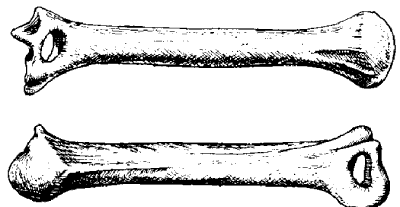 |
Science Frontiers ONLINE No. 122: Mar-Apr 1999 |
|
|
The Black Pyramids
Spain's Canary Islands off the northwest coast of Africa hardly seem a place for pyramids, but there seem to be six of them on Tenerife, near Guimar. The inhabitants of this island have generally ignored these dilapidated piles of black volcanic stones. However, one perceptive native described them in a letter to T. Heyerdahl of Kon Tiki fame and a leading proponent of ancient cultural diffusion across all oceans.
Quick to respond, Heyerdahl perceived amid the debris six stepped pyramids of black stone. He persuaded a Norwegian businessman to buy the site, clean up the debris of centuries, and found a museum. One of the "black" pyramids has now been restored, but some experts are still unconvinced. However, recent excavations under one pyramid have yielded artifacts identified with the pre-Spanish inhabitants of Tenerife. Meanwhile, Heyerdahl has been checking out a rumored pyramid on Sicily.
Could Heyerdahl be right when he claims there were age-old cultural links between Mesopotamia, Egypt, Mexico, the Canaries, and even the Pacific Islands?
(Mead, Robin; "Riddle of the Black Pyramids," London Times, December 19, 1998. Cr. A.C.A. Silk)
Comment. The pre-Spanish inhabitants of the Canaries were the Guanches, who are noted for two other interesting things: (1) A very high frequency of the olecranon perforation of the upper arm bone; and (2) The use of a language of whistles, which they use to communicate over long distances.
 | The olecranon perforation of the humerus is usually frequent among the Guanches, the pre-Spanish inhanitants of the Canary Islands. (From Ancient Man). |